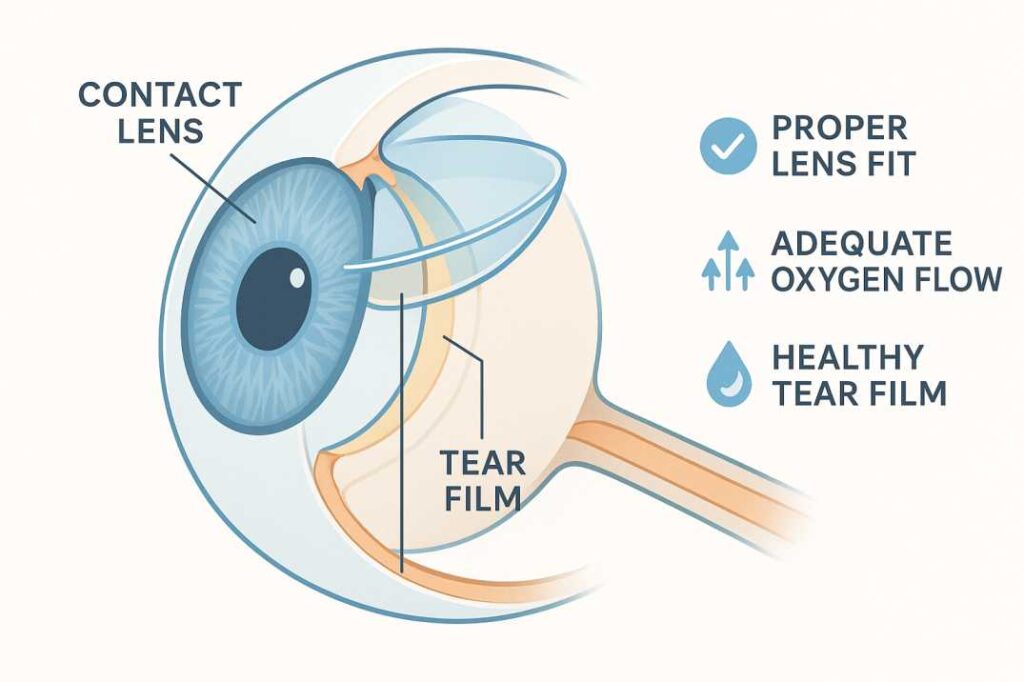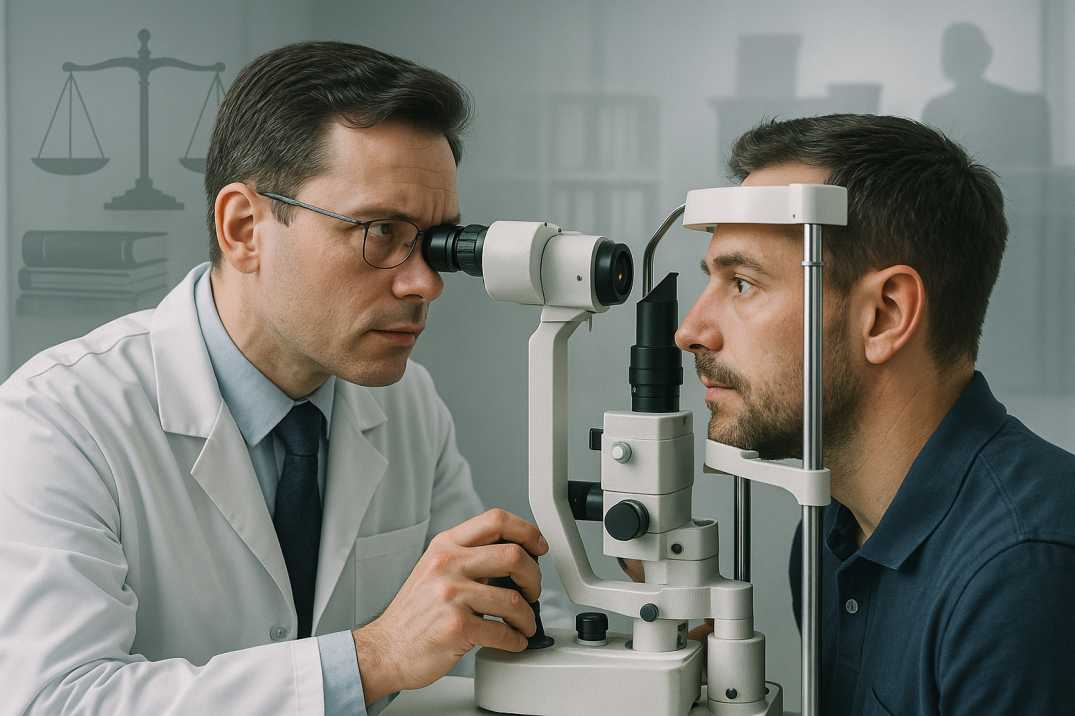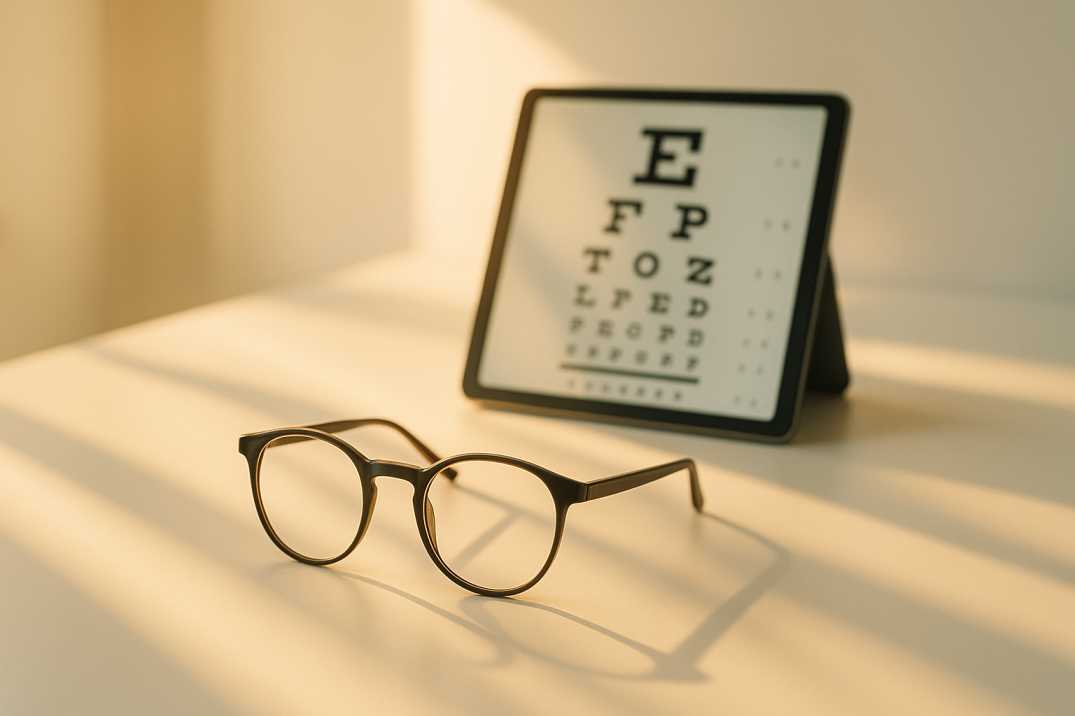My Contacts Always Hurt—What to Do Next
When Contact Lens Discomfort Signals a Bigger Problem
If you’ve caught yourself thinking “my contacts never feel comfortable,” you’re far from alone. Approximately 45 million Americans wear contact lenses, representing roughly 16-17% of U.S. adults Eyes On Eyecare Vision Center, and many experience persistent discomfort that makes them consider abandoning their lenses entirely.
Here’s the encouraging news: Most contact lens problems can be easily resolved, often with something as simple as switching contact lens brands or adjusting your lens care routine.
This comprehensive guide will help you understand when contact lens discomfort is a normal adjustment period versus when it signals a problem requiring professional attention. Whether you’re a new wearer struggling with initial adaptation or an established user experiencing new symptoms, we’ll explore:
- The root causes of contact lens discomfort
- Practical solutions you can try at home
- Critical warning signs requiring immediate specialist care
- Advanced treatment options available in 2025
Understanding Contact Lens Discomfort: What’s Normal and What’s Not
The Initial Adjustment Period: What to Expect
When you first start wearing contact lenses, it’s completely normal to feel mild discomfort or awareness of the lens in your eye. For most people, these sensations fade quickly—sometimes after just a few hours or days of consistent wear.
Normal initial symptoms include:
- Mild irritation or awareness that something is in your eye
- Slight dryness, especially in air-conditioned environments
- Increased blinking as your eyes adjust
- Minor sensitivity to light
Think of it like breaking in a new pair of shoes—there’s an adjustment period, but they should eventually feel like a natural extension of your body. Once you’ve adjusted to wearing contact lenses, you shouldn’t be able to feel them in your eyes.
When Discomfort Becomes a Real Problem
Contact lens discomfort is formally defined as a condition where unwanted sensations occur only during lens wear and stem from either contact lens-specific or environmental causes.
The key diagnostic characteristic? The discomfort goes away when you remove the lenses.
Research identifies three primary components of contact lens discomfort: lens awareness, dryness, and soreness. Here’s what should give you hope: Studies show that 74 percent of patients who stopped wearing contact lenses reported they would be willing to try again if their issues could be resolved.—which means most discomfort problems are treatable with the right intervention.
The Top 7 Reasons Your Contacts Never Feel Comfortable
1. Improper Lens Fit (The #1 Culprit)
Improper lens fit is the number one complaint made by lens wearers and the most common reason why contact lenses feel uncomfortable.
Your eyes are as unique as your fingerprint, and contact lenses aren’t one-size-fits-all. A properly fitting lens covers the whole cornea and moves a little when you blink.
Problems occur when:
- The lens is too large: It won’t sit properly and gets dislodged by your eyelid movements
- The lens is too small: It doesn’t provide adequate corneal coverage
- The lens is too tight: Tight lenses tend to feel comfortable initially but lead to discomfort after multiple hours of wear because tear exchange is poor, resulting in lens dehydration.
- The lens is too loose: If it moves too much, you could experience dry eye, irritation, and itchiness.
Solution: Schedule a comprehensive lens fitting evaluation with a specialist who uses advanced corneal mapping technology to determine your perfect fit.
2. Dry Eye Syndrome (The Silent Saboteur)
Dry eye syndrome is a common condition that occurs when your tears are unable to efficiently lubricate your eyes, making them feel dry, sore, irritated, and gritty.
Here’s the connection to contact lenses: Contact lens wear leads to thinning of the lipid layer in your tear film and increased evaporation. Even more concerning, lens wear can turn a borderline dry eye patient into one who experiences significant discomfort.
Environmental factors that worsen dry eye:
- Extended screen time and reduced blinking (a major issue for office workers)
- Air conditioning or heating systems that reduce humidity
- Low-humidity environments (especially airplane cabins)
- Smoke, dust, or seasonal allergens
Solution: Address underlying dry eye with professional treatments before it impacts your contact lens experience. Many new solutions exist specifically for contact lens wearers.
3. Lens Material Incompatibility
Not all contact lens materials work well with every eye. There’s a newer generation of soft disposable contact lenses made of materials that allow more oxygen to flow to the eyes and generally feel more comfortable.
However, if the lens material has a low “wettability,” meaning it doesn’t retain moisture well, it becomes prone to drying out.
Different lens types to consider:
- Daily disposable lenses: Fresh lens every day eliminates buildup issues
- Silicone hydrogel lenses: Enhanced oxygen permeability for healthier corneas
- Conventional hydrogel lenses: Traditional water-based materials
- Scleral lenses: Hard RGP lenses designed to vault over the cornea and sit on the sclera, containing a reservoir of solution for constant hydration and relief of dry eye symptoms.
Solution: Work with your eye care specialist to find the lens material that matches your eye chemistry and lifestyle needs.
4. Inadequate Lens Care and Hygiene
Throughout the day, your lenses can accumulate bacteria, eyeliner, and other makeup, traces of hair products, and even perfume, causing problems with comfortable wear.
More seriously, inadequate contact lens care can leave a residue on your lenses and cause discomfort, inflammation, and serious eye infections.
Essential lens care practices:
✓ Wash hands thoroughly before handling lenses
✓ Use fresh solution—never reuse or mix solutions
✓ Lightly rub lenses during cleaning, even with “no-rub” formulas.
✓ Replace lens cases every three months
✓ Follow the prescribed replacement schedule religiously
Solution: Establish a consistent, thorough cleaning routine and never cut corners on lens hygiene.
5. Solution Sensitivity (The Hidden Allergen)
It’s not uncommon for contact lens wearers to be allergic or sensitive to preservatives in their contact lens solution. Buildup, they don’t always remove all deposits like proteins, and some solutions can actually cause discomfort to your eyes.
Signs you might be sensitive to your solution:
- Red, itchy, or sore eyes that worsen after cleaning
- Burning sensation when inserting freshly cleaned lenses
- Discomfort that starts shortly after using the solution
- Symptoms that improve when you switch products
Solution: Try preservative-free solutions or different brands. Your eye doctor can recommend hypoallergenic options.
6. Wearing Lenses Too Long (Overwear Syndrome)
The longer you wear your lenses without taking them out to sleep or clean, the more discomfort you will feel.
Contact lens overwear syndrome occurs when the eye rejects the lens as a foreign body after overexposure to the lens or lens contamination.
Here’s the science: The cornea gets oxygen directly from the air rather than indirectly via the lungs, so bacteria, oils, and dirt can block oxygen flow when contact lenses are worn for too long. This oxygen deprivation can lead to serious complications, including corneal damage and vision-threatening infections.
Solution: Strictly adhere to your prescribed wearing schedule. Give your eyes regular “breathing time” by switching to glasses periodically.
7. Underlying Eye Conditions
Other conditions, like conjunctivitis, can make doing anything with your eyes uncomfortable, including wearing contacts.
Additional conditions affecting contact lens comfort:
- Allergies: Seasonal allergies can make your contacts less comfortable, or you could be having an allergic reaction to your contacts themselves through giant papillary conjunctivitis (GPC).
- Meibomian gland dysfunction: Affects oil production in tears, leading to rapid evaporation
- Blepharitis: Inflammation of the eyelids that impacts tear quality
- Keratoconus: Irregular corneal shape requiring specialty lenses
- Previous eye surgery: Can permanently change corneal characteristics
Solution: Comprehensive eye health evaluation to identify and treat underlying conditions before optimizing contact lens wear.
Warning Signs: When to See a Specialist Immediately
While mild discomfort might be manageable with home remedies, certain symptoms require immediate professional attention. Remove your lenses immediately and contact your eye doctor if you experience any of the following symptoms:
Urgent Warning Signs Requiring Same-Day Care:
- Severe eye pain that doesn’t resolve after lens removal
- Sudden vision changes or significant blurriness
- Intense redness that looks like burst blood vessels
- Unusual discharge from the eye (yellow, green, or thick)
- Light sensitivity makes it difficult to keep eyes open
- Foreign body sensation that persists after removing lenses
- Swelling of the eyelids or surrounding area
Understanding the Serious Risks
Microbial keratitis is a serious type of eye infection in contact lens wearers, which can lead to blindness or the need for a corneal transplant in the most severe cases.
The statistics are sobering: Microbial keratitis incidence ranges from about 2 cases per 10,000 wearers for rigid gas permeable daily wear up to 20 per 10,000 for those sleeping in soft lenses—demonstrating how overnight lens use can be 5 to 10 times riskier than daily-wear routines.
In severe instances, contact lens overwear syndrome can signal a serious infection or injury that might lead to permanent eye damage, including blindness.
Critical: Simply re-inserting an uncomfortable contact lens can put your eyes at risk for serious damage—you may have a serious condition such as a corneal ulcer or eye infection.
Practical Solutions to Try at Home
Before scheduling an appointment, try these evidence-based strategies to improve comfort:
Immediate Relief Measures
1. Use lubricating drops properly
Artificial tears can relieve occasional dryness, but check with your eye doctor before using them because not all can be used safely with contacts. Some can actually damage your lenses.
2. Reduce wearing time strategically
Give your eyes regular breaks by alternating with glasses, especially during high-demand activities like computer work.
3. Check lens orientation
Ensure lenses aren’t inside out—this is more common than you think and causes immediate discomfort.
4. Inspect for damage
Look for tears, debris, or protein buildup under good lighting before each insertion.
5. Rehydrate lenses
Blink more frequently or use rewetting drops specifically designed for contact lenses.
Long-Term Comfort Strategies
Optimize your environment:
✓ Use a humidifier in dry indoor spaces (aim for 40-50% humidity)
✓ Take screen breaks following the 20-20-20 rule (every 20 minutes, look 20 feet away for 20 seconds)
✓ Position computer screens below eye level to reduce tear evaporation
✓ Stay hydrated by drinking 8-10 glasses of water throughout the day
Improve nutrition for eye health:
Supplementing your diet with omega-3 fatty acids and flaxseed oil has been shown to improve the oily composition of tears, helping to prevent abnormal evaporation.
Consider adding salmon, walnuts, or high-quality fish oil supplements to your diet.
Upgrade your lens care routine:
- Switch to daily disposable lenses if you have recurring buildup issues
- Try preservative-free solutions for sensitive eyes
- Clean lenses immediately after removal while deposits are fresh
- Replace lens cases every 3 months (mark your calendar)
When Professional Help is Necessary
Schedule a Comprehensive Eye Exam If:
- Discomfort persists beyond the initial adjustment period (more than 1-2 weeks for new wearers)
- Over-the-counter solutions don’t provide adequate relief
- Symptoms progressively worsen over time
- Are you experiencing any warning signs mentioned above
- You notice changes in vision quality or clarity
- Discomfort significantly impacts your daily activities or quality of life
What to Expect at Your Appointment
A thorough contact lens evaluation should include:
1. Comprehensive symptom assessment
Your eye doctor will ask detailed questions about the nature, timing, and severity of your discomfort.
2. Slit lamp examination
Detailed microscopic inspection of your eye health and current lens fit.
3. Tear film evaluation
Assessment of dry eye symptoms using specialized tests.
4. Lens fitting analysis
Checking if your current lenses are the right size, shape, and material for your unique eyes.
5. Ocular surface evaluation
Looking for signs of inflammation, infection, or damage that may not be visible to the naked eye.
Validated surveys like the Contact Lens Discomfort Index (CLDI) and Contact Lens Dry Eye Questionnaire (CLDEQ-8) can help guide clinicians in identifying patients who need further evaluation.
Advanced Treatment Options Your Specialist Might Recommend
Specialty Contact Lenses
If traditional soft lenses aren’t working, your eye doctor might suggest:
Scleral lenses: Particularly beneficial for severe dry eye or irregular corneas. These larger lenses vault over the entire cornea and rest on the white part of the eye.
Custom soft lenses: Tailored to your unique eye shape using advanced corneal mapping technology.
Hybrid lenses: Combining the comfort of soft lenses with the optical clarity of gas-permeable lenses.
Different replacement schedules: Switching from monthly to daily disposables can dramatically reduce discomfort from buildup.
Medical Treatments for Dry Eye
Professional dry eye treatments available in 2025:
Punctal plugs: Tiny pieces of silicone or acrylic inserted into the tear ducts to decrease tear drainage and keep more moisture on the eye surface.
This minimally invasive procedure takes just minutes.
Prescription eye drops: Advanced medications like Restasis, Xiidra, or Cequa that increase tear production.
Intense pulsed light (IPL) therapy: FDA-cleared treatment for meibomian gland dysfunction that uses light pulses to restore gland function.
LipiFlow treatment: Thermal pulsation therapy that clears blocked oil glands in minutes.
Omega-3 supplements: Professional-grade formulations specifically designed to improve tear quality.
Lens Material and Design Changes
Recent studies show that newer lens technologies featuring enhanced wettability and stability received positive feedback for both comfort and vision from participants who had previously discontinued contact lens use.
Your specialist might recommend:
- Lenses with higher oxygen permeability (Dk/t values above 125)
- Water gradient technology (like Dailies Total1)
- Surface treatments that enhance moisture retention throughout the day
- Different lens thicknesses or edge designs for improved comfort
Prevention: Maintaining Long-Term Comfort
Essential Daily Habits
1. Follow wearing schedules religiously
Don’t extend wear time beyond recommendations, even if lenses feel comfortable.
2. Practice proper hygiene
Always wash your hands with soap and dry them completely before handling lenses.
3. Never sleep in lenses
Unless specifically designed and prescribed for overnight wear—and even then, discuss risks with your doctor.
4. Replace lenses on schedule
Don’t try to extend the life of disposable lenses to save money—the cost of an infection far exceeds lens costs.
5. Attend regular check-ups
Annual eye exams ensure your prescription and fit remain optimal as your eyes change over time.
Environmental Modifications
- Avoid wearing contacts in smoky or dusty environments when possible
- Use protective eyewear in windy conditions (wrap-around sunglasses help)
- Be mindful of air quality and adjust wearing time accordingly
- Keep backup glasses accessible for days when your eyes need rest
Lifestyle Adjustments for Digital Device Users
The digital age has created new challenges for contact lens wearers. Computer vision syndrome affects approximately 66% of digital device users, with two of every three knowledge workers experiencing some degree of digital eye strain.
Recent UK and Ireland studies show digital eye strain occurrence rates of 62.6% among working adults.
Many of these symptoms are likely attributable to increased tear film evaporation secondary to decreased blink frequency during digital device use.
Strategies for digital device users:
✓ Position screens at or slightly below eye level
✓ Increase text size to reduce squinting and eye strain
✓ Use artificial tears before extended computer sessions
✓ Take regular breaks from screens (set phone reminders)
✓ Consider blue light filtering or computer-specific lenses
✓ Adjust screen brightness to match ambient lighting
✓ Use matte screen protectors to reduce glare
Resources and Citations
Below are key scientific sources and authoritative references used to compile this comprehensive guide on contact lens discomfort.
Scientific Research and Clinical Studies
1. Tear Film and Ocular Surface Society (TFOS) Contact Lens Discomfort Workshop
- URL: https://www.reviewofoptometry.com/article/defeating-contact-lens-discomfort
- Publication Date: August 15, 2025
- Summary: This comprehensive workshop report establishes the clinical definition of contact lens discomfort and identifies the three primary components: lens awareness, dryness, and soreness. The research emphasizes how contact lens wear affects tear film stability and provides evidence-based guidelines for eye care professionals.
2. Centers for Disease Control and Prevention (CDC) – Contact Lens Safety and Care
- URL: https://www.cdc.gov/contact-lenses/causes/index.html
- Publication Date: August 25, 2025
- Summary: The CDC provides critical public health information on contact lens-related eye infections, including microbial keratitis prevention strategies and proper contact lens hygiene practices affecting millions of American wearers.
3. Recent Clinical Study: Patient Satisfaction with Novel Daily Toric Contact Lenses
- URL: https://pmc.ncbi.nlm.nih.gov/articles/PMC11988191/
- Publication Date: April 2025
- Summary: This peer-reviewed clinical study found that 74% of former contact lens wearers reported willingness to retry lenses if their issues could be resolved, highlighting the importance of addressing discomfort to reduce dropout rates.
The Bottom Line: Don’t Settle for Discomfort
Here’s what you need to remember: Contact lenses should not hurt or cause persistent discomfort.
After an initial acclimation period, most types of contact lenses should feel comfortable all the time—you shouldn’t even notice they are in your eyes.
If your contacts never feel comfortable, it’s not something you should accept or try to tough out. Importantly, 74 percent of patients who stopped wearing contact lenses reported they would be willing to try again if their issues could be resolved.
This statistic should give you hope—with the right intervention, most people can successfully wear contacts comfortably.
Take Action If:
- You’re a new wearer, and discomfort persists beyond 2 weeks
- You’re an established wearer experiencing new or worsening symptoms
- You’re considering giving up on contacts due to discomfort
- Over-the-counter solutions haven’t provided adequate relief
- You experience any of the warning signs mentioned in this guide
Why Choose Cannon EyeCare for Your Contact Lens Concerns
The field of contact lens technology has advanced significantly, with continuous innovations in materials, designs, and dry eye treatments. What didn’t work for you in the past might have better solutions available today.
At Cannon EyeCare, we combine Midwestern hospitality with expert eye care to address all your contact lens concerns. Our comprehensive approach includes:
- Advanced diagnostic technology, including corneal mapping and tear film analysis
- Extensive selection of specialty lenses for difficult-to-fit eyes
- Personalized fitting process that considers your unique eye shape and lifestyle
- Ongoing support to ensure long-term wearing success
Don’t settle for constant discomfort when solutions are available. Schedule an appointment with our eye care specialists who can help you find the right approach for your unique needs.
Contact Cannon EyeCare Today
University Village & Pike Place Market Locations
FAQs
-
It may be due to a poor lens fit, dryness, or allergies. The discomfort could result from wrong curvature or sensitivity; an eye doctor can customize your lens type.




